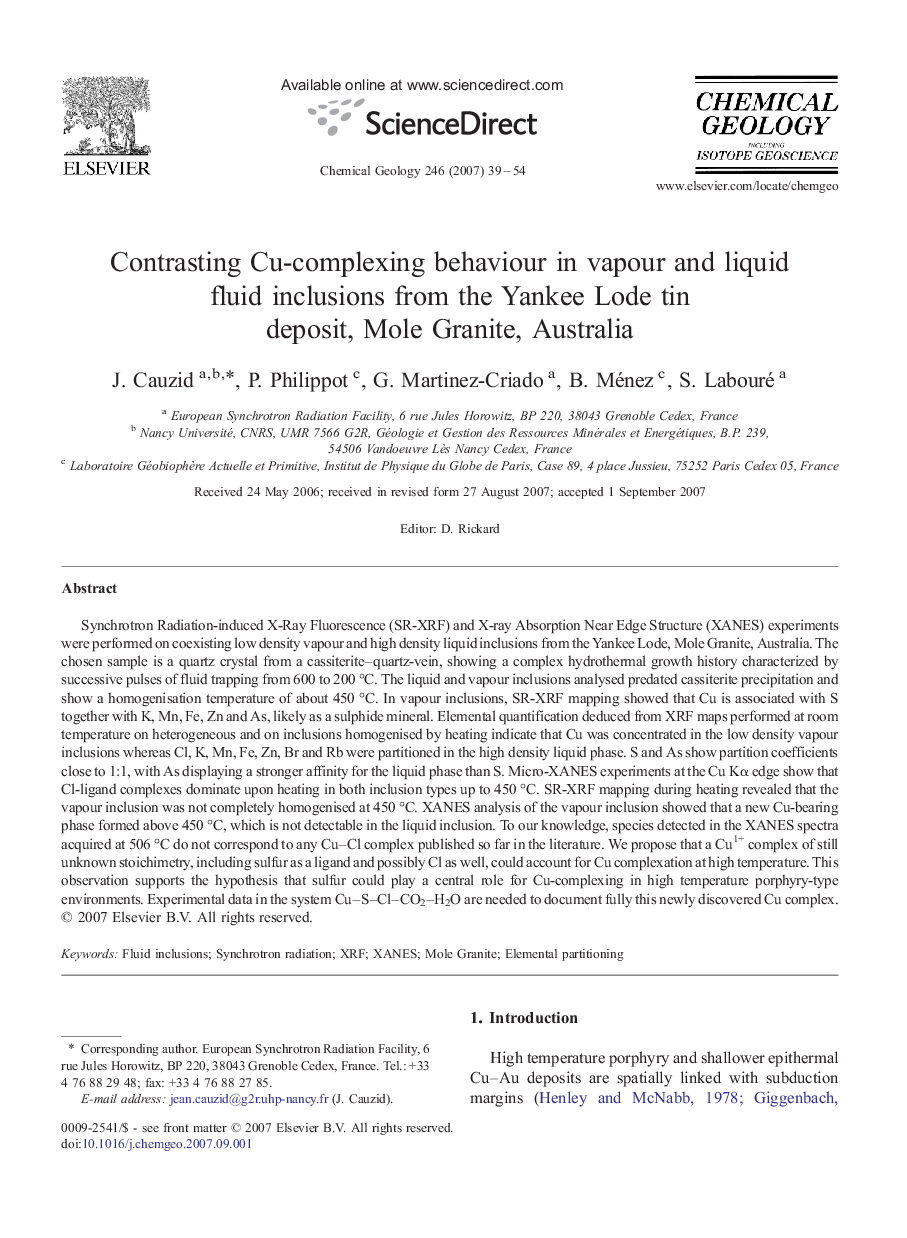| کد مقاله | کد نشریه | سال انتشار | مقاله انگلیسی | نسخه تمام متن |
|---|---|---|---|---|
| 4700725 | 1637738 | 2007 | 16 صفحه PDF | دانلود رایگان |

Synchrotron Radiation-induced X-Ray Fluorescence (SR-XRF) and X-ray Absorption Near Edge Structure (XANES) experiments were performed on coexisting low density vapour and high density liquid inclusions from the Yankee Lode, Mole Granite, Australia. The chosen sample is a quartz crystal from a cassiterite–quartz-vein, showing a complex hydrothermal growth history characterized by successive pulses of fluid trapping from 600 to 200 °C. The liquid and vapour inclusions analysed predated cassiterite precipitation and show a homogenisation temperature of about 450 °C. In vapour inclusions, SR-XRF mapping showed that Cu is associated with S together with K, Mn, Fe, Zn and As, likely as a sulphide mineral. Elemental quantification deduced from XRF maps performed at room temperature on heterogeneous and on inclusions homogenised by heating indicate that Cu was concentrated in the low density vapour inclusions whereas Cl, K, Mn, Fe, Zn, Br and Rb were partitioned in the high density liquid phase. S and As show partition coefficients close to 1:1, with As displaying a stronger affinity for the liquid phase than S. Micro-XANES experiments at the Cu Kα edge show that Cl-ligand complexes dominate upon heating in both inclusion types up to 450 °C. SR-XRF mapping during heating revealed that the vapour inclusion was not completely homogenised at 450 °C. XANES analysis of the vapour inclusion showed that a new Cu-bearing phase formed above 450 °C, which is not detectable in the liquid inclusion. To our knowledge, species detected in the XANES spectra acquired at 506 °C do not correspond to any Cu–Cl complex published so far in the literature. We propose that a Cu1+ complex of still unknown stoichimetry, including sulfur as a ligand and possibly Cl as well, could account for Cu complexation at high temperature. This observation supports the hypothesis that sulfur could play a central role for Cu-complexing in high temperature porphyry-type environments. Experimental data in the system Cu–S–Cl–CO2–H2O are needed to document fully this newly discovered Cu complex.
Journal: Chemical Geology - Volume 246, Issues 1–2, 30 November 2007, Pages 39–54